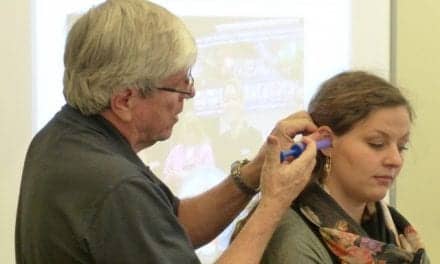By Dennis Van Vliet, AuD
If the only thing a prospective hearing aid candidate is interested in is price, maybe he or she is better off looking elsewhere. We can then have the time to work with the patients who want and need our expertise.
In October of this year, The New York Times published a commentary titled “The Hunt for an Affordable Hearing Aid” by Tricia Romano. The author tells her story of experiences after her “decade-old analog hearing aid” starting malfunctioning. She described taking the “wax-encrusted” aid to a variety of places to seek advice about how to resolve her problem. She described hearing aids as “costly” and that “purchasing a hearing aid had become even more difficult and confusing than buying a new car—and almost as expensive.” This is from a person who describes herself as having a 30-year history of hearing aid use. Ms Romano expresses an attitude that isn’t much different from often-heard public perceptions.
Romano details a variety of hearing aid dispensing delivery models that include traditional face-to-face dispensing, online orders, and a familiar warehouse environment (where you may pick up toilet-paper and a few bottles of wine along with your hearing aids). She also discusses a variety of features now available in hearing aids that were not offered a decade ago when she purchased her old hearing aid. Quotes from industry personalities offered a variety of opinions, some stressing the value and importance of individual service, others saying essentially that service and advanced-feature hardware were only fodder for marketing departments to make claims and charge more for the product.
Here is a person who undoubtedly has benefitted from hearing aids for decades, yet writes as though she feels that the cost is “expensive” and that “It isn’t clear why it costs thousands of dollars.” (She is only able to wear one aid.)
I can understand that she may not appreciate many of the newer features, such as noise reduction, since she has a lifetime of hearing with analog circuitry without noise reduction. A change in processing for these patients is often not accepted. I don’t blame her for not wanting to pay for something she doesn’t need. At the same time, feedback reduction might make hearing aid use more convenient, and wireless accessories might be helpful in some environments. These options may be available only in products that cost more than a potential user feels is an appropriate price to pay.
Where have we failed to provide a perception that what we can offer is worth the price? Romano wrote that she felt like someone shopping for a Honda in a place that only offered Mercedes and Porsches. I get that perspective. I’m not interested in a $2,500 suit, but I’m not about to buy one for $100 in a warehouse either. There is some point where my sense of value matches up with quality.
What do we do to provide a sense of value? Romano ended by talking about an older man located inside an eyeglass shop. He said he could clean out the wax and repair the shell for $100. That apparently was her perception of good value, even though many of us provide similar services for our patients as a part of routine service at little or no cost.
Maybe we strive too much to keep the choices limited to avoid confusing the purchaser. Too many choices may not be good, especially when we know very little about a product or service, or have a limited perspective. It is common to offer a “good, better, best” product choice. Patients will then often ask about what they might be missing if they don’t buy the “best” option. The answer is very dependent upon the user. Some who exist in a relatively quiet world watching television and speaking to only a few people at a time may be fine with a simple, basic hearing aid. Others with a similar lifestyle may have a soft-spoken relative that they struggle to hear. A remote wireless microphone might make those visits much more meaningful, provide good value, and be worth the added cost.
How do we approach a patient so that we can recognize their perception of good value and match them up with the proper product and service package? If we have done a good job of uncovering their needs and history, we might recognize that the last time they purchased hearing aids, the cost may have been $700 or so per ear, and their needs are different today. The average price of hearing aids has increased faster than the Consumer Price Index over the past decade. Starting out with a very high-end proposal that may be three times what they remember paying in the past may create a sticker-shock reaction. Learning more about the patient, their perceptions and needs, and then offering a limited number of choices with a clear selection rationale and difference in what features are available in each offering can make the choice much easier and acceptable for the patient.
The Final Word? If the only thing a prospective hearing aid candidate is interested in is price, and doesn’t appreciate the price ranges we offer, doesn’t want or need service and support, and doesn’t mind spending a lot of time investigating a variety of delivery options in a trial and error method, maybe he or she is better off looking elsewhere. We can then have the time to work with the patients who want and need our expertise, and help them with properly fit and maintained hearing instruments. We can show our patients how to avoid having “wax-encrusted” aids.

|





